NITRIC OXIDE: MASTER MOLECULE FOR HEALTH AND LONGEVITY
by Ronald Peters, MD, MPH
“Most if not all chronic diseases, including cardiovascular disease (the number one killer of men and women worldwide) are characterized and associated with loss of nitric oxide production. Loss of nitric oxide production is the earliest event in the onset and progression of chronic disease.”
Nathan Bryan, Ph.D. , Department of Molecular Medicine, Baylor College of Medicine
 Nitric oxide and NAD are two of the most powerful and versatile molecules in the vast complex natural intelligence of your body. NAD generates energy, or ATP, while nitric oxide ensures that life giving blood reaches every organ and cell in your body. Medical research shows that production of both nitric oxide and NAD begin to decline around 40 to 50 years of age and both are touted to be the primary cause of chronic disease and aging.
Nitric oxide and NAD are two of the most powerful and versatile molecules in the vast complex natural intelligence of your body. NAD generates energy, or ATP, while nitric oxide ensures that life giving blood reaches every organ and cell in your body. Medical research shows that production of both nitric oxide and NAD begin to decline around 40 to 50 years of age and both are touted to be the primary cause of chronic disease and aging.
For more information on NAD click https://healmindbody.com/service/nad/
Nitric oxide (NO for short) is made by the endothelium, or arterial lining, which is estimated to be 60,000 miles in length reaching every part of the molecular universe in your body. Unlike other signaling molecules, NO is a gas than penetrates through tissues, and has the following effects on your cardiovascular system:
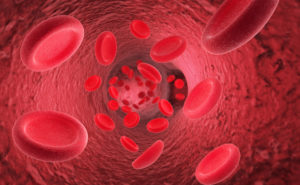 Dilating the arteries so they can carry more blood,
Dilating the arteries so they can carry more blood,- Reducing blood pressure,
- Decreasing oxidative stress and inflammation,
- Inhibiting platelet aggregate which may reduce blood flow,
- Preventing atherosclerosis and coronary artery disease.
Basically, when blood flow throughout your body begins to decline, around mid-life, the cellular conditions begin to favor inflammation, microbe and toxin accumulation, and immune dysfunction, thus setting the stage for chronic, age-related, diseases.
NITRIC OXIDE PRODUCTION DECLINES WITH AGE
According to Dr. Nathan and other researchers, “as we age, we lose 85% of our ability to make nitric oxide”. According to research published in Circulation, a science journal focused on cardiovascular disease, “advancing age is an independent factor to the progressive impairment of endothelial-dependent vasodilation in humans”. In other words, as the years go by, we become increasing unable to deliver blood to all parts of our bodies and the result is inflammation, higher levels of toxins and microbes, and the development of chronic illness.
Thomas Sydenham, a prominent English physician, who lived in the 17th century wrote: “A man is as old as his arteries.”. The modern science of nitric oxide physiology helps to explain this astute observation.
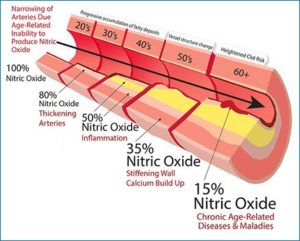
This graphic showing progressive loss of NO correlating with atherosclerosis, is from Dr. Nathan’s book, Functional Nitric Oxide Nutrition, and implicates the key function of nitric oxide in the development of of atherosclerosis.
Also, loss of NO production occurs with aging in “healthy” people. According to Dr. Egashira, writing in Circulation, in 1993, vasodilation was tested in 18 healthy people from 23 to 70 years old. Using acetylcholine, an endothelial independent vasodilator, a 23-year-old expanded his artery five times the normal width at rest, while a “healthy” 70-year-old expanded his artery only two times the width at rest. In additional research, the same Japanese team found a loss of 75% of endothelium released NO in people 70 to 80 years old as compared to 20-year-olds.
Interestingly, acetylcholine is the primary neurotransmitter for the parasympathetic nervous system, and creates smooth muscle contraction, dilation of blood vessels, increases bodily secretions, as well as slowing heart rate, all of which are key to the Rest, Restore and Digest functions of the PNS.
BEYOND CIRCULATION, NITRIC OXIDE SUPPORTS MANY ESSENTIAL FUNCTIONS IN THE BODY
Not only does NO regulate blood flow, it also plays a key role in the regulation of numerous vital biological functions including the following:
- Immunity –NO inhibits viral replication, enables white blood cells to kill cancer cells and bacteria. It helps to prevent infection, cancer and autoimmunity.
- Brain – neurotransmitter-like function enabling neurons to communicate, this enhancing memory and helping to prevent neurodegeneration in diseases such as Alzheimer’s and Parkinson’s,
- Respiration – enhancing bronchodilation and preventing asthma,
- Cell protection – supporting apoptosis, regulating angiogenesis and preventing tumor cell growth,
- Cell regeneration – mobilizing resident stem cells and targeting cell differentiation,
- Reproduction – relaxing of the uterus and bladder in women, and enabling penile erection in men,
- GI tract – normal motility, mucosal integrity, reducing inflammation and preventing malignancy.
According to Dr. Nathan, “this simple molecule controls oxygen and nutrient delivery to every cell in the body, it regulates cellular communication and even has anti-microbial properties that protect our body from invading pathogens. In fact, this molecule is so important it was named ‘Molecule of the Year’ by Science Magazine in 1992 and in 1998 a Nobel Prize in Physiology or Medicine was awarded to the three US Scientists responsible for its discovery.”
So, who needs this power molecule?
- Anyone who is aging
- Anyone over the age of 40
- People with circulation issues, such as coronary artery disease, peripheral vascular disease or carotid artery stenosis.
- Diabetics
- People with low energy, or persistent fatigue.
- People with sexual dysfunction or who desire improved performance in bedroom
- Anyone on antacids or proton pump inhibitors, such as Prilosec, Nexium and Prevacid
- Anyone interested in disease prevention
- Anyone getting stem cell therapy
There are several types of signaling, or communication, molecules which control the complex inter-related processes within the body and most of them are biochemical molecules. However, nitric oxide is a gas which is synthesized by the body, released locally and then it is gone within a few seconds. Therefore, it cannot be administered as a supplement. The only way to restore nitric oxide levels is to promote or restore its natural production in the body.
HOW DO WE MAKE NITRIC OXIDE?
There are two ways the body makes NO.
- L-arginine conversion to NO using an enzyme called nitric oxide synthetase, or NOS, for short.
- Converts nitrate from foods into nitrite which is used to make nitric oxide.
Each pathway contributes about 50% of the total NO production and one can compensate for the other. However, when NO production from both pathways becomes limiting, then that is when chronic disease begins to develop.
The L-arginine to nitric oxide enzyme, nitric oxide synthetase, is dependent on NAD, the other anti-aging celebrity molecule, and it is an extremely complicated conversion which can be disturbed by a variety of metabolic and cellular issues. Basically, like many enzymatic pathways in the body, it is disturbed by normal aging, oxidative stress, poor diet, lack of physical exercise, smoking, diabetes, and high sugar diet. Therefore, simple L-arginine supplementation may not always work properly and can do more harm than good. For example, L-arginine supplementation can activate the Herpes virus.
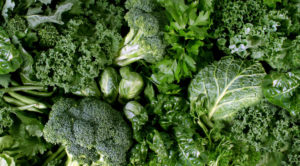 The other NO production process in the body depends of your diet – specifically the intake of nitrates which are found in green leafy vegetables. But like most of the NO story, it is not simple.
The other NO production process in the body depends of your diet – specifically the intake of nitrates which are found in green leafy vegetables. But like most of the NO story, it is not simple.
The NITROGEN CYCLE IN YOUR BODY is a relatively new understanding in medicine and goes like this.
- As you chew nitrate rich green leafy vegetables, certain types of healthy bacteria living on your tongue reduce, or convert, about 20% of the nitrate into nitrite.
- After you swallow, the nitrites are converted into nitric oxide by the acid in the stomach (ph. 4 or less).
- From the stomach, the nitrates and nitrites enter the small intestines where they are reabsorbed.
- After they enter the blood stream they are delivered throughout the body for NO production.
- About 25% of the circulating nitrates are concentrated in the salivary glands where they once again are exposed to the bacteria on the tongue for conversion to nitrites and the cycle goes on and on.
- Each time you salivate, the nitrate is used as an energy source by certain species of bacteria on your tongue. Nitrite and nitrate in the saliva are as much as 100 times higher than in the circulation. And, each time we swallow our saliva, it reaches the stomach where it becomes nitric oxide due to the acidic stomach fluids.
The nitric oxide gas that is produced in the saliva has a protective benefit by helping to kill food borne pathogens such as E, coli, Listeria and Clostridia. Salivary NO also kills Helicobacter pylori, the bacterium responsible for stomach ulcers. And finally, salivary NO improves blood flow to the stomach which improves the integrity of the stomach lining.
THE DANGERS OF LOW STOMACH ACID PRODUCTION
When the stomach is normally acidic, we make nitric oxide every time we swallow saliva. However, there are common conditions in which the stomach acid production is inadequate. “Hypochlorhydria” is the medical term for low stomach acidity and it is very common. Elderly people tend to have low stomach acid, as well as people with a long history of stress in their lives. As you know, chronic stress suppresses digestion, including acid production in the stomach, as well as immunity and other key body functions. Hypochlorhydria not only impairs NO production, it contributes to poor mineral and amino acid absorption, as well as common symptoms such as gas, bloating after meals, undigested food in the stool, Candida overgrowth, dysbiosis, and leaky gut syndrome.
 A patient who is given an acid blocking medication such as Pepcid, Zantac, Nexium, and Prevacid, for symptomatic relief of heartburn or gastroesophageal reflux (GERD) will shut off gastric acid production and produce no nitric oxide in their stomach. Research has shown that three to five years of taking proton pump inhibitors (e.g. Nexium and Prilosec) increase the risk of heart attack and stroke by 30%.
A patient who is given an acid blocking medication such as Pepcid, Zantac, Nexium, and Prevacid, for symptomatic relief of heartburn or gastroesophageal reflux (GERD) will shut off gastric acid production and produce no nitric oxide in their stomach. Research has shown that three to five years of taking proton pump inhibitors (e.g. Nexium and Prilosec) increase the risk of heart attack and stroke by 30%.
In addition, insufficient acid leads to incomplete protein digestion, leaving peptides, or, undigested protein fragments, which are absorbed through the bowel wall and into the blood circulation. The immune system recognizes these peptides as “foreign” and makes antibodies to inactivate them, thus contributing to food allergies and autoimmunity. According to Dr. Nathan:
“With proton pump inhibitors being the third largest class of prescribed drugs worldwide, millions of people take them – generating tens of billions of dollars in revenue for pharmaceutical companies. The inhibition of nitric oxide production combined with auto-immune conditions and insufficient nutrient absorption make these drugs potentially the most dangerous drugs on the market for long-term use.”
Dr. Nathan recommends some form of nitric oxide nutrition for those that cannot stop the medications. However, as an integrative physician for the past 40 years I would strongly add that heartburn and GERD are reversible and it is one of the most common treatments in my medical practice. By eliminating delayed onset food allergies, such as dairy, wheat and egg, as well as treating Candida overgrowth, hyperacidity symptoms go away, and patients can easily stop the acid blocking drugs. It is unfortunate that the modern diseases are “managed” with symptomatic medications, instead of healed with healed using the science of integrative medicine.
NUTRITIONAL PRODUCTION OF NITRIC OXIDE
Since L-arginine conversion using nitric oxide synthetase (NOS) declines with aging, supporting the nutritional pathway is essential. Fifty percent or more of NO bioactivity is determined by eating foods containing nitrates as well as proper oral bacteria populations which begin the conversion process to nitrites. Basically, dietary nitrate utilization is controlled by:
- Amount of nitrate content in the diet, and
- Bacteria populations living on the tongue that convert nitrate into nitrites (part of a healthy oral microbiome)
How much nitrate do we need? Research has shown that 300-400 mg nitrate intake daily is required necessary to see changes in blood pressure or improvement in exercise capacity, both indicating improved NO production. However, the average intake in the American population is estimated to be about 150 mg nitrate per day (over 2-3 meals), which is one half on needed intake for optimal nutritional NO production. Basically, we are a nitrate deficient population. The food industry has capitalized on the taste bud’s preference for sugar and fat and the green leafy vegetables are eaten much less.
Also, to make nitrate nutrition more complicated, the nitrate and nitrite concentrations in conventional and organic raw vegetables varies greatly depending on where they were grown and what farming techniques were utilized. For example:
MEAN NITRATE CONCENTRATIONS (PPM) OF RAW VEGETABLES CLASSIFIED AS CONVENTIONALLY GROWN FROM EACH CITY
Chicago Dallas Los Angeles New York
Broccoli 271 357 512 279
Cabbage 475 256 800 193
Celery 230 2052 2651 88
Lettuce 207 1370 1051 568
Spinach 657 4923 4138 564
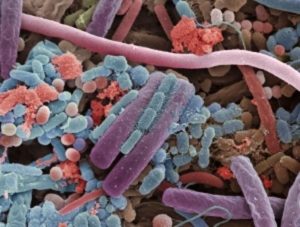 Dr. Nathan’s research shows that 30 to 40% of the population does not have the nitrate to nitrite converting bacteria living on the tongue. The following are the most common reasons for deficiencies in these key bacteria:
Dr. Nathan’s research shows that 30 to 40% of the population does not have the nitrate to nitrite converting bacteria living on the tongue. The following are the most common reasons for deficiencies in these key bacteria:
- Prior use of antibiotics that kill healthy bacteria as well as the bacteria causing infections,
- Antiseptic mouthwash use,
- People with poor oral hygiene as disease causing bacteria that compete for nutrient resources.
There are several types of mouthwash. The most common use of mouthwash is antiseptic or antibacterial which kill the bacterial plaque that causes cavities, gingivitis, and bad breath, but also kill, like antibiotics taken orally, the healthy and beneficial bacteria living in your mouth, such as those that convert dietary nitrate into nitrites.
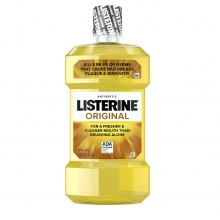 Listerine and other antibacterial mouthwashes fight bad breath, plaque, and gingivitis. Listerine contains thymol, eucalyptol, methyl salicylate, and menthol are the only over-the-counter antibacterial mouthwashes approved by the American Dental Association. Antibacterial formulas can reduce bacteria counts in the mouth by an average of 75 percent, but they are dangerous to use for long periods of time.
Listerine and other antibacterial mouthwashes fight bad breath, plaque, and gingivitis. Listerine contains thymol, eucalyptol, methyl salicylate, and menthol are the only over-the-counter antibacterial mouthwashes approved by the American Dental Association. Antibacterial formulas can reduce bacteria counts in the mouth by an average of 75 percent, but they are dangerous to use for long periods of time.
Your dentist will diagnose your needs for mouthwash and might prescribe a one containing chlorhexidine, but it should be taken for a short period of time with focus on restoration of the oral microbiome.
In summary, in order to improve your nitric oxide production, consider the following:
- Eat more green leafy vegetables
- Stop using mouthwash and don’t overuse antibiotics.
- Make sure your stomach is making stomach acid, or, HCl.
EXPLORATIONS INTO A HEALTHY HUMAN MICROBIOME
You are a Superorganism with over a 100 trillion microbes live in your body, which is more than your own cells. The majority live in our gut and they consist of bacteria, fungi, protozoa and viruses., The number of genes in this living universe living within you is 200 times the number of genes in your DNA.
The benefits of healthy and balanced microbiome include:
- Strong immunity
- Protect against other microbial pathogens that cause disease
- Improved brain health
- Produce B vitamins, B12, thiamine, riboflavin,and vitamin K
- Better weight control
- Good digestion and assimilation
- Proper body detoxification of chemicals and heavy metals
- Promoting HDL cholesterol and helping to prevent heart disease.
- Maintaining good blood sugar levels and preventing diabetes
As the healthy ecology of your microbiome deteriorates, you increase the risk for chronic diseases such as obesity, inflammatory bowel disease, diabetes mellitus, metabolic syndrome, atherosclerosis, allergy, central nervous system-related diseases and more.
Bad bugs will grow if your diet contains excess sugar, meat, fats, sodas, dairy, gluten, GMO foods, and processed foods. The healthy microbiome can only feed off of plant fiber, such as vegetables, gluten free whole grains, beans and fruit.
Manipulating of bacterial populations in the body is now seen as part of the future of medical therapies for many disorders.
Regarding the oral microbiome, the following species of bacteria are associated with conversion of oral nitrates to nitrites:
- Granulicatella adiacens
- Haemophilus parainfluenzae
- Actinomyces oris,
- Neisseria flavescens,
- Neissera mucosa,
- Neisseria sicca,
- Neisseria subflava,
- Prevotella melaninogenca,
- Prevatells salivae,
- Veillonella disar,
- Veillonella parvual
- Veillonella atypica
LABORATORY TESTING AND TREATMENT
Call MindBody Medicine Center for an appointment
480-607-7999
MEASURING YOUR LEVELS OF NITRIC OXIDE
The amount of nitric oxide in your saliva is a biomarker for total body nitric oxide. If your saliva in low in NO, then your body is low as well. It could be that you are not making enough in your blood vessels, or perhaps you do not have the right bacteria on your tongue to convert the nitrates from leafy vegetables into nitrites which your body uses to make nitric oxide.
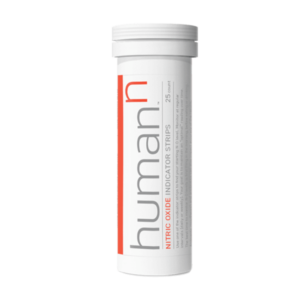
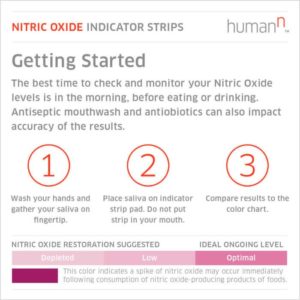 Salivary test strips will guide you. Using your finger, apply saliva to the felt pad on the end of a test strip. Within a few seconds the test strip will turn a shade of pink. The darker the pink the more NO you have.
Salivary test strips will guide you. Using your finger, apply saliva to the felt pad on the end of a test strip. Within a few seconds the test strip will turn a shade of pink. The darker the pink the more NO you have.
KALE, SPINACH CHALLENGE TEST: If your test is light pink, or low, go and eat a high nitrate salad with spinach, kale, and other vegetables. About 90 to 120 minutes later retest your saliva using the test strip. If you have a darker shade of pink, you have the right bacteria on your tongue. If you do not improve the color on the test strip, then you do not have the right bacteria to covert the nitrates from the vegetables into nitrites which will become nitric oxide in your body.
Once again, if you do not improve your levels after the kale – spinach challenge, if you are using mouthwash, you should stop. Also, you should eat more nitrate rich foods. Also, prior antibiotic use may have killed the oral bacteria.
Research is showing that simply eating more nitrate rich leafy vegetables will significantly increase some forms of nitrate converting good bacteria. Also, since nitrite and NO are toxic to many pathogenic bacteria, simply adding more green leafy vegetables may restore the balance of good versus bad bacteria.
SUMMARY OF DIET AND LIFESTYLE MODIFICATIONS THAT CAN IMPROVE NO PRODUCTION.
Physical exercise – Get moderate physical exercise. Exercise stimulates the production of nitric oxide.
Eat leafy greens – Eat more green leafy nitrate enriched vegetables
Antiseptic mouthwash – Stop using antiseptic mouthwash.
Oral hygiene – Maintain good oral hygiene and sufficient stomach acid production.
SUPPLEMENTS THAT IMPROVE NITRIC OXIDE PRODUCTION
Various nitric oxide nutrient blends are in the testing process. Elevated levels of nitric oxide will:
- Improve heart health.
- Improve blood circulation and lower blood pressure
- Improve energy production.
SUMMARY OF FORMS OF NITROGEN
NITROGEN – Nitrogen, or N2, is the predominant gas in our atmosphere, making up about 79 percent of the volume of the atmosphere. Bacteria in the soil transform atmospheric N2 gas into ammonia, nitrates and nitrates, which plants need to make amino acids, proteins, and chlorophyll so they can grow. Nitrogen is also a major component of amino acids, the building blocks of proteins. A small amount of nitrogen is fixed by lightning, but most of the nitrogen harvested from the atmosphere is removed by nitrogen-fixing bacteria and cyanobacteria (formerly called blue-green algae). Without proteins, plants wither and die. Bacteria convert the waste nitrogen back to nitrogen gas, which returns to the atmosphere.
NITROGEN DIOXIDE – Nitrogen dioxide (NO2) is one of several nitrogen oxides. Millions of tons of NO2 are produced each year and used primarily in the production of fertilizers. NO2, is also a gaseous air pollutant and forms when fossil fuels such as coal, oil, gas or diesel are burned by automobiles and trucks creating a component of smog.
NITRATES – Nitrates (NO3) consist of one nitrogen atom and three oxygen atoms. Nitrates are relatively inert, which means they’re stable and unlikely to change and cause harm. They are converted to nitrates by soil bacteria which are essential for plant growth. Also, bacteria in the mouth or enzymes in the body can convert them into nitrites.
NITRITES – Nitrites (NO2) consist of one nitrogen atom and two oxygen atoms. In turn, nitrites can either turn into nitric oxide, which is beneficial for the body, or, nitrosamines, which can be harmful.
NITROSAMINES – Manufacturers add nitrates and nitrites to foods such as cured sandwich meats, bacon, salami or sausages to give them color and to prolong their shelf life. When added to processed foods in this way, both nitrates and nitrites can form nitrosamines in the body, which can increase your risk of developing cancer.
NITROUS OXIDE – Nitrous oxide is a gas that is used in medical and dental anesthesia. When inhaled, it enters the blood stream and travels to the brain, where it triggers the release of opioids, endorphins and dopamine, producing feelings of relaxation and even euphoria, often causing the giggles and laughter – hence the nickname ‘laughing gas’.





